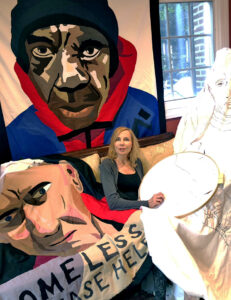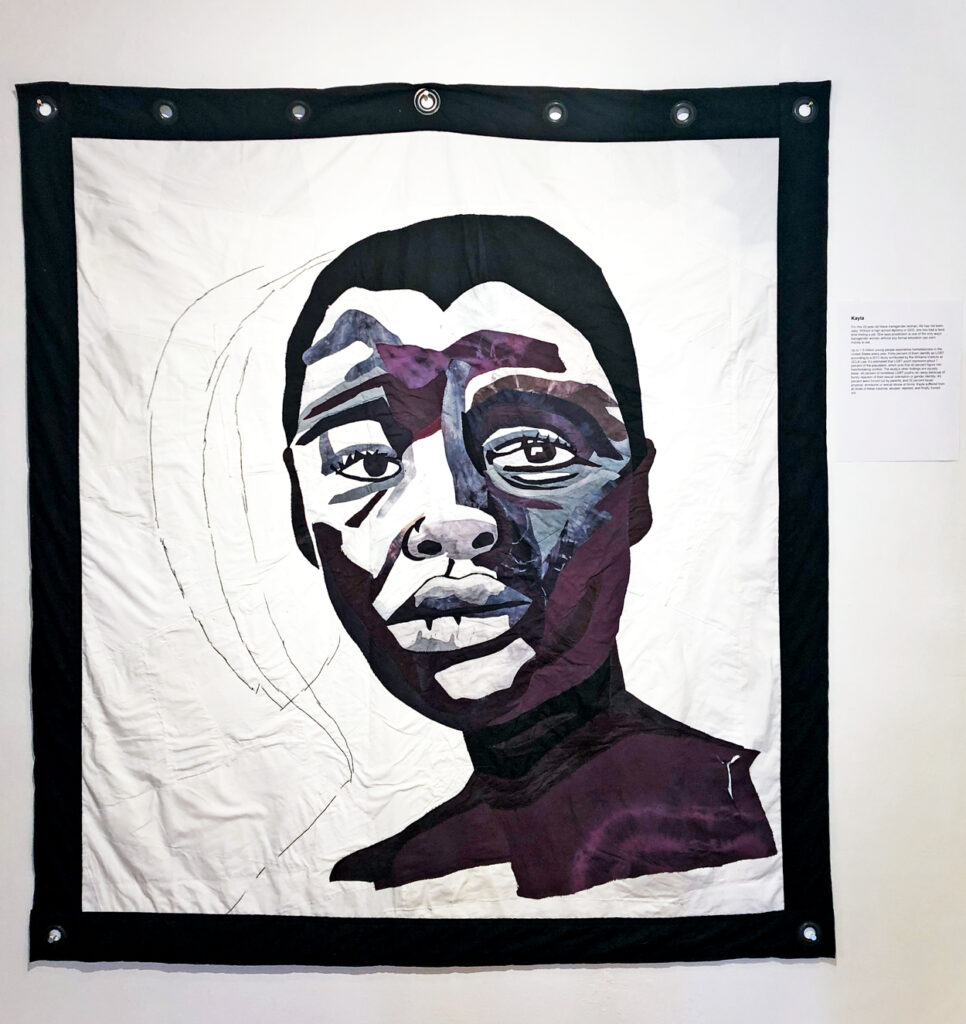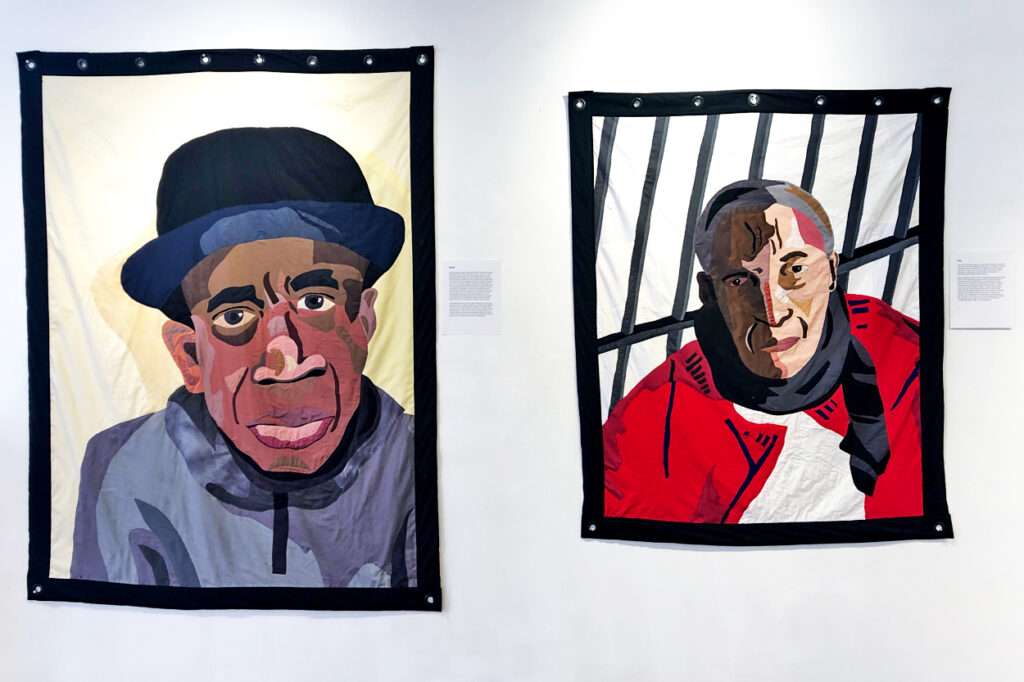Every picture may tell a story, but who owns the art? The artist? The subject? The space and community that houses the work? Whose story is really being told? For local artist Carolyn Harper, the answer is a resounding “all of the above.” She combines her interest in photography, drawing, painting, portraiture, embroidery, and textiles to tell stories of men, women, and children experiencing homelessness through the creation of quilts.
Carolyn is clear that her work may be an expression of her artistic journey, but she offers her subjects a platform to be seen and heard. When they view her art, her subjects offer guidance and context for how and what is displayed. All of the stakeholders combine to produce the collaborative treasures “Look Me In The Eye: Portraits of Homelessness” on display at The Muse Gallery in Old City.

She sees what some Philadelphians would prefer to ignore. This new exhibit spotlights members of our community whom she meets in shelters or on the streets. The artist sees beauty in faces that are often unacknowledged. Her passion is to tell the stories of people the rest of the world would rather forget. For her art serves as fuel for change. Her process has been a journey of self-discovery, friendship, and a deep commitment to community engagement.
The path to activism was circuitous for Carolyn Harper. She explored various types of crafts and art forms that reflected cultures and communities different from her suburban life for years, and in 2015 decided to make social justice the absolute focal point of her work. Initially she was afraid “the homeless,” but forced herself to push beyond this personal boundary to build commonality with her subjects and soon realized that she was not so different than the people she met. She maintains that one choice, one circumstance, one event may be all that separates many of us from our homes.
Carolyn started building relationships with people at The Salvation Army Red Shield Center in Philadelphia’s West Poplar neighborhood. She learned that many young white men experiencing homelessness have struggled with drugs, while economic factors are more pressing in the African American community. Mental illness is an enormous issue for women who are homeless. Carolyn notes that these men and women do not generally present themselves as victims. She describes a raw honesty in their perspective that is both humbling and overwhelming. That is the emotion that she tries to capture and the story she wants to convey through her work.

Piecing fabric together creates an image that is quite different, and less real, than a painting, which oftentimes seeks to imitate or idealize the person being portrayed. Carolyn searches to find the individual and emotional human character of each person she depicts.
The first step in all of her work is to obtain permission from every subject, all of whom are paid. They are then photographed and drawn in pencil on to fabric. These images are then used to create shapes and colors, which are the basis of a large collage. Once a face collage of fabrics has been created, each piece is sewn down and she creates a background and backing.
Next, the artist uses batik, a technique of hand-dyeing fabrics by using wax and boiling water, which is a traditional Indonesian art form. She then adds embroidery. The final result is a large (up to five square feet) quilt with a unique image which is accompanied by the personal story of her subject.

Although The Muse exhibit features ten large quilts, some of the artist’s work is smaller in scale and design. Carolyn also crafts drawings on white fabric with decorative embroidery. She produces small pieces upon request, often for children, without charge.
Her quilts cover walls at Sunday Breakfast Rescue Mission in Center City where clients critique the art, express preferences, and request specific artistic themes as they share a meal and time together. Displaying these treasures comes with its own set of challenges, Carolyn is very mindful as to how her subjects are perceived, as she does not want anyone to be viewed as objects of pity. She believes that her friends in the homeless community want Philadelphians to see them, to pay attention to them, to look them in the eye. Her mission is to balance visibility with dignity.
Her practice is not only about documenting – it is also about making connections with people, and her hope is that the work will encourage others to do the same. Her experience in working with portraiture and Philadelphians experiencing homelessness is that the portraits serve to empower the people being depicted. They are able to see themselves through the portraits as not just experiencing homelessness, or being jobless, but as singular individuals with an important story and history. The quilts provide her subjects with agency and a means by which they can advocate for social justice.
The Muse Gallery, 52 North Second Street, will feature Ms. Harper’s quilts until December 1. After the Philadelphia show, the exhibit will travel to various galleries and universities across the country.
My Philly Neighbor is a project done in collaboration with Broke In Philly, a news media initiative among 19 local news organizations to provide in-depth, nuanced and solutions-oriented reporting on the issues of poverty and the push for economic justice in Philadelphia.

